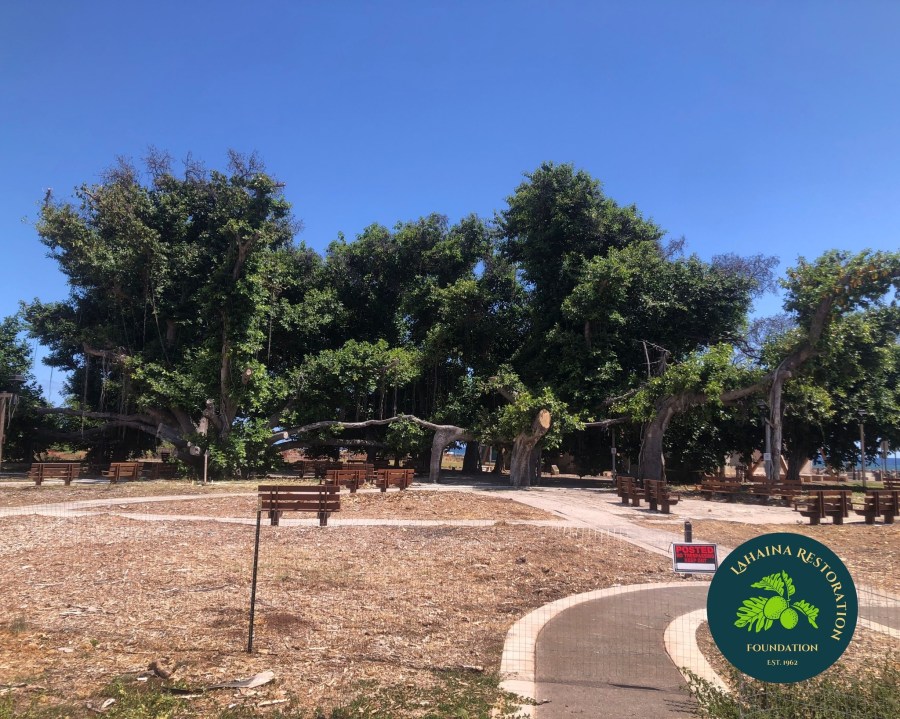LAHAINA (KHON2) — Nearly two years after the devastating wildfires swept through Lahaina and Kula, one of Lahaina’s most well-known landmarks has made a significant comeback.
The 152-year-old banyan tree was planted in 1873 by Sheriff William Owen Smith to commemorate the 50th anniversary of the first Protestant missionaries in Lahaina.
Two years later, he participated in the overthrow of the Kingdom of Hawaii.
Since Aug. 2023, the tree has served as a sign of resilience and re-growth for many, thanks to restoration efforts and also immediate care following the blaze.
“It’s really, really healthy,” explained Duane Sparkman, arborist committee chair and Treecovery Lahaina president. “We’re super stoked to see as much growth as we’ve seen in the past year and a half. We’ve seen aerial roots coming down from almost 20 feet high, and they’re almost touching the ground already. There’s so much fruit—it’s become a habitat again. It’s a thriving tree system.”
Sparkman, who has been leading recovery efforts since the fire, says that despite the progress, the tree remains fenced off to the public—for now.
Sparkman says some large horizontal limbs still need structural support, and safety is the top priority before reopening the area. That work is expected to take another three to four months.
“There’s a push to get it open,” Sparkman said. “It’s the only shade down there, especially for people surfing or visiting. Getting that shade back to the public would be awesome.”
Beyond the tree itself, the Treecovery Lahaina team—working with the Lahaina Restoration Foundation—is preparing to replant the surrounding area with culturally and historically significant trees. In a recent site walk, the groups identified a mix of native and ornamental trees to restore the space.
The Lahaina Restoration Foundation also recently finished adding new benches under the tree.
“We’re going to start the process with design and planting beautiful trees back into Lahaina,” Sparkman said.
The tree could grow back in the areas that had to be cut due to severe fire damage — thanks to “air layers” collected back in January 2024.
“The beauty of these air layers is—they are the same tree,” Sparkman explained. “We can train the branches to grow toward each other. They might not fuse like before, but if we arbor them properly, it’ll start to look like what it used to.”
Parts of the tree, especially near the courthouse, remain strong and tall—reaching up to 55 feet with a solid green canopy.
When the fires first struck Lahaina, many feared the banyan tree was beyond saving.
“I had no idea it would make it,” Sparkman admitted. “Other arborists who came down weren’t optimistic. Some thought the tree wouldn’t survive.”
But the team was allowed into the fire zone early to water and treat the tree—even while much of the area remained closed to the public.
“The program we put in, and the love we gave it—it turned a corner and started re-growing in mass,” Sparkman said. “It’s just awesome.”
The Banyan Tree is just one part of a much larger reforestation effort across Maui. Sparkman says Treecovery Lahaina, alongside community partners, is working to plant 30,000 native trees across both Lahaina and Kula.
That includes ornamental, native and fruit-bearing trees—but not invasive forest species. They’re also working with others to plant trees at culturally significant locations, such as the nursery at Mokuʻula.
“We want to bring back what the community lost,” Sparkman said. “It’s about more than trees. It’s about healing.”
